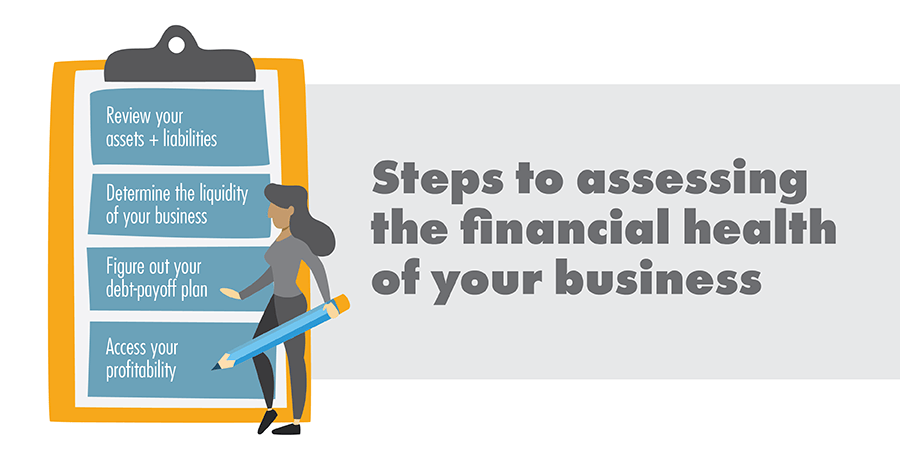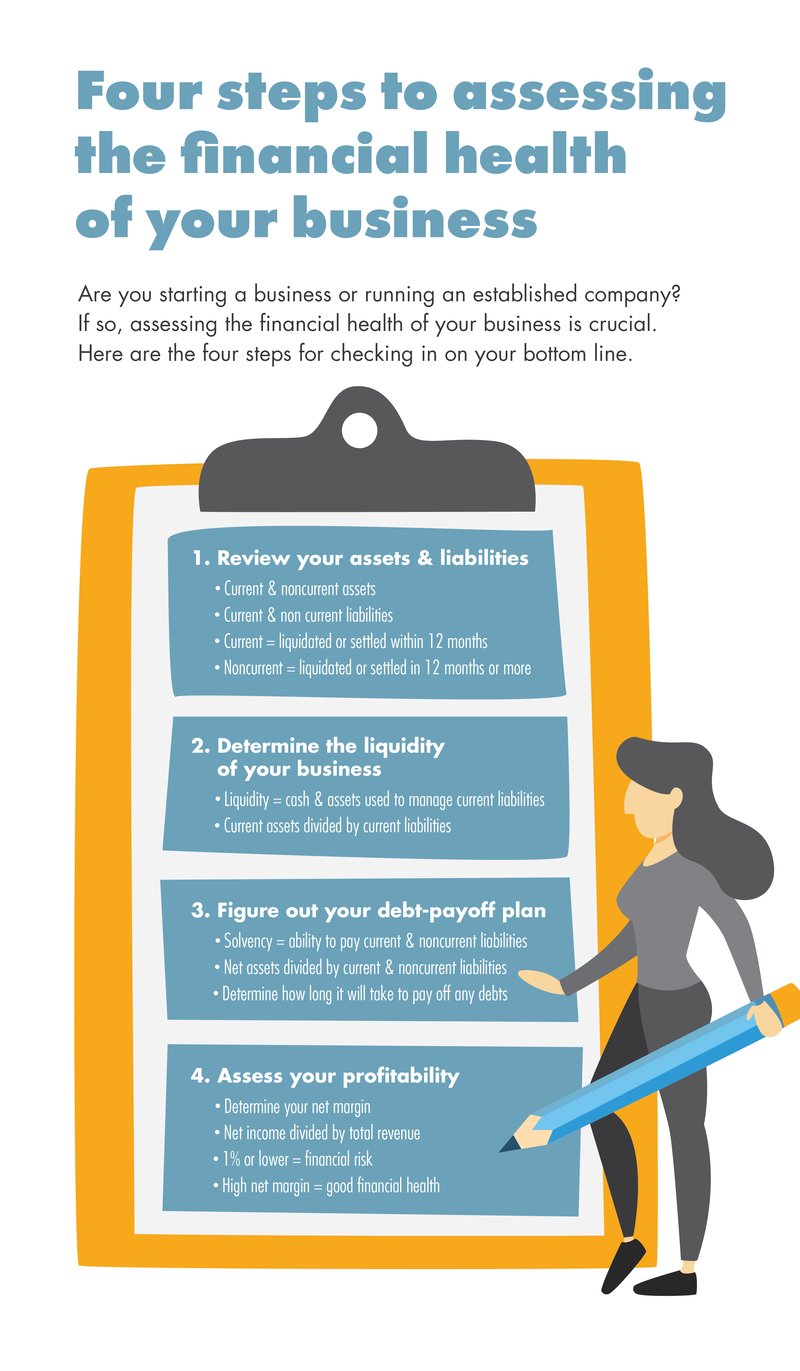Are you starting a business or running an established company in Portland or elsewhere? If so, Consolidated Community Credit Union can help you assess the well-being of your business. Take these four easy steps to improving and assessing the financial health of your company.
If you’re a business owner, it’s crucial that you have an accurate and up-to-date evaluation on how things are going with your company financially. While you may have a general idea of how much money is in the bank, or how much you owe in business loans, this doesn’t paint the entire picture for how your business is doing. That’s why it’s essential to learn how to assess the financial health of your business.
4 Steps for assessing the financial health of your business
The first step in assessing the financial health of your business is reviewing your current and noncurrent assets and liabilities. Your current assets and liabilities are those that can be liquidated (converted to operating cash) or settled (paid off) within 12 months. Noncurrent implies they cannot be liquidated or settled within a year.
Current assets may include cash, inventory, and accounts receivable, while noncurrent assets might consist of intellectual property, land, or long-term investments. Current liabilities could include accounts payable, taxes payable, and short-term business loans, while noncurrent liabilities might involve long-term loans, bonds payable, or deferred revenues.
1. Review your business assets and liabilities
How much you need to live on vs. how much you want is always a healthy question to ask yourself. Answering questions like these will help you plan for a healthy financial future. Above all, knowing the what and whys around your spending can improve your relationship with what you earn. Interrogate yourself about the amount you decide you want to make. Why do you need that much? Is that amount what you want before or when you have kids, buy a home, travel, etc.? Examining the reasons you need to increase your earnings–and by how much–helps you create positive spending habits around things that are important to you.
However, many of us use money as a barometer for our successes. It’s important to reflect on that inclination and think about whether we’re doing okay monetarily right now. Take a step back and ask yourself about your financial goals and where they come from. Doing this exercise helps us get a clear understanding of our motivations around our spending.
2. Determine your business's liquidity
The next step in assessing the financial health of your business is to determine the liquidity of your company. Liquidity is the amount of cash and assets that can easily be converted into money for managing short-term (current) liabilities. This is typically measured by dividing your current assets by your current liabilities. If this number is less than one, your business is not in good financial health and may not be able to continue in the long term because your liabilities exceed your current assets.
3. Create your debt-payoff plan
Once you’ve calculated your liquidity, you should figure out your business’s debt-payoff plan. Solvency refers to your ability to pay your debts including both short-term and long-term liabilities. This is calculated by dividing your net assets by your current and noncurrent liabilities. If this number is low, your company is likely to default on business loans and other debt obligations. It’s important to figure out how long it will take your business to pay off its debts so that you can determine your long-term profitability. In general, you want to forecast that your debt-to-equity ratio will decrease over time.
4. Assess your company's profitability
Next, you’ll want to assess your company’s profitability. Knowing your liquidity, solvency, and debt-to-equity ratio are essential in evaluating the financial health of your business, but the true bottom line is the profitability of your professional venture. While an operation can stay afloat for years without making a profit by running on funds from business loans and investors, you have to become profitable to reach long-term success.
You can assess your value by determining your net margin. This is calculated by dividing your net income by your total revenue. A net margin of one percent or lower means that your business is likely at risk for being in the red and losing money. However, a high net margin indicates that your company is valuable and in good financial health.
If you’re starting a Portland business or running a company that’s been operating for several years, it’s essential that you assess the financial health of your venture on a regular basis. you’ll have a good idea on the future success of the company by reviewing your assets and liabilities, determining your liquidity, figuring out your debt-payoff plan, and assessing your profitability.




